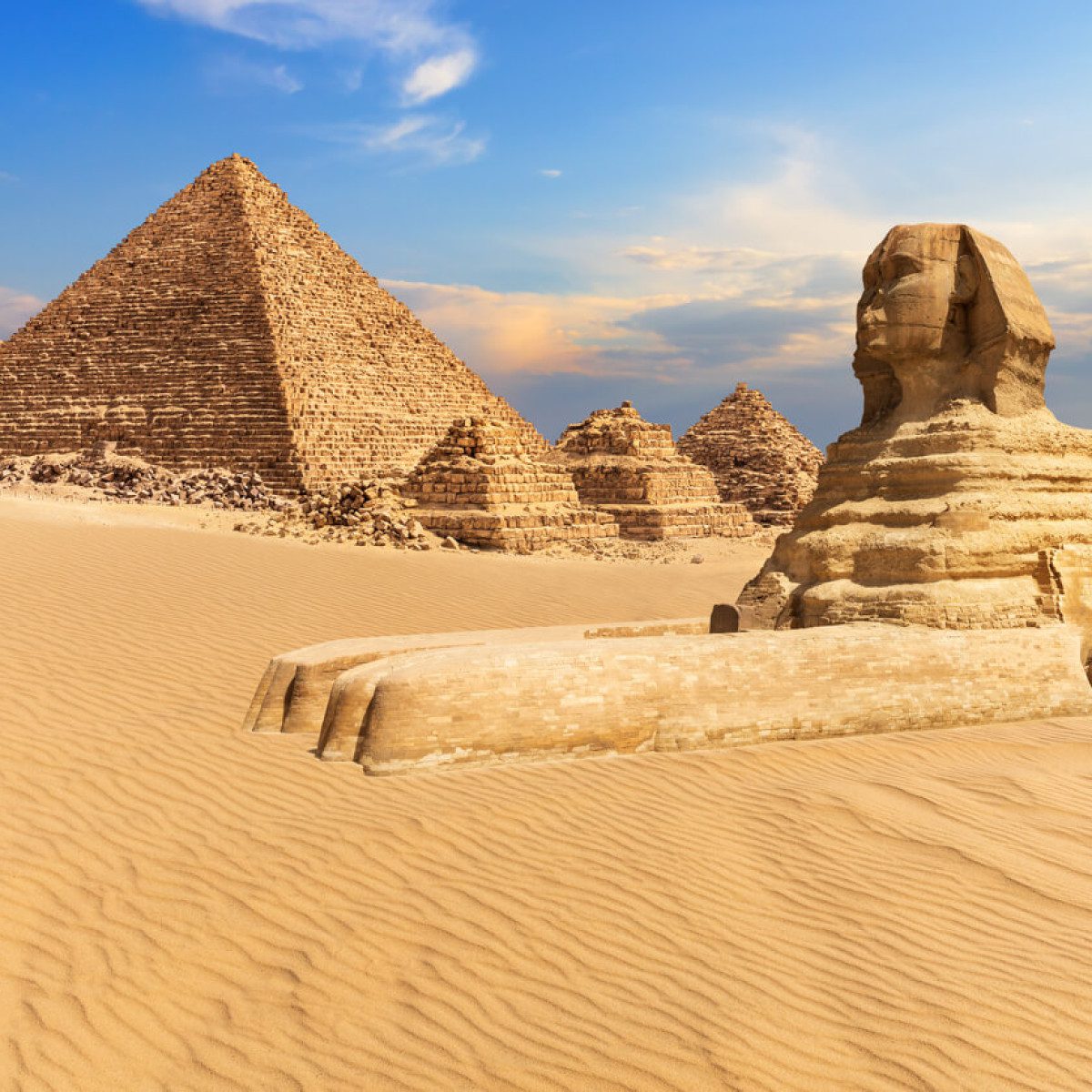Pyramids of Giza, Cairo
The Giza Plateau, located about 15 kilometers southwest of Cairo, is one of the most famous archaeological sites in the world because it contains the Great Pyramid, one of the Seven Wonders of the Ancient World, built by King Khufu (Cheops) of the Fourth Dynasty of the Old Kingdom around 2550 BCE. The ancient Egyptians called the pyramid “Almarr.” Besides the Great Pyramid, the site also includes the statue of the Sphinx and the pyramids of Khafre and Menkaure.
Pyramids of Giza, Cairo
Next to these pyramids, there are tombs of the royal family, nobles, and workers—known as the “pyramid builders.” Each pyramid is a royal tomb named after the king who built it and was buried within.
This represents a stage in the evolution of tomb architecture, beginning with mastabas, passing through the Step Pyramid of Djoser, and culminating in the pyramid shape we know today.
Architecture and Construction
The architect of the Great Pyramid was Hemiunu, who constructed it on an area of about 13 acres (around 5,500 square meters). Construction took about 20 years, as the Greek historian Herodotus recorded from priestly accounts.
The pyramid consists of approximately 201 layers of limestone, totaling about 300,000 stones, with the average stone weighing between 2.5 and 15 tons or more.
The pyramid weighs about 7 million tons and currently stands about 137 meters tall. Originally, it was about 146 meters high, but some stones fell from the top. The base sides measure about 227 meters in length.
Externally, the pyramid was covered with a beautiful casing of polished limestone, which some ancient travelers compared to a giant mirror in the heart of the desert reflecting sunlight and moonlight.
Interior Architecture and Findings
Inside the pyramid are many corridors and chambers, the most important being King Khufu’s burial chamber, built from red granite. To the west of this chamber is a granite sarcophagus without a lid.
The stones for the pyramid’s construction were quarried from Tura.
In ancient times, a small pyramid called Harim stood at the top, which some scholars believe was made of pure gold.
Near the pyramid, so-called “solar boats” were discovered on its southern side in a rectangular pit measuring 31 meters long and 2.5 meters wide.
Additional Structures and Discoveries
The pit was about 3.5 meters deep and contained one of Khufu’s solar boats, which is now exhibited in the Grand Egyptian Museum.
Next to Khufu’s pyramid stands the Pyramid of Khafre, about 143 meters high, and a third, smaller pyramid called the Pyramid of Menkaure, which is approximately 66.5 meters tall.
One of the most important monuments in the area is the statue of the Sphinx—a lion with a human head carved from a single rock, which may represent King Khafre.
The Sphinx is about 20 meters high and 57 meters long, adorned with a royal headdress and once had a royal beard. It is currently housed in the Louvre Museum in Paris.
Recently, the workers’ city who built the pyramids was uncovered, revealing their homes, cooking areas, medical facilities, and their graves.

